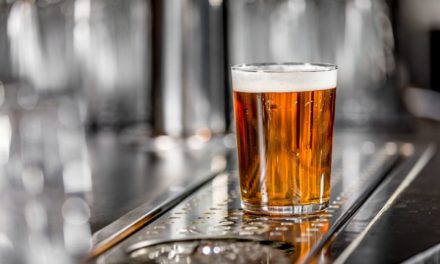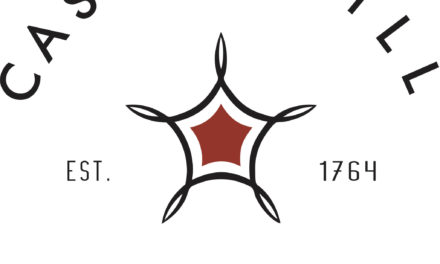Your label is your chance to make a great first impression. And its attractiveness—or lack thereof—is in the details. This doesn’t mean just looks; it means presenting your brand and its story in the right light. It reflects the hard work you put into creating your product. In short, an alcohol beverage bottle is one book that people will judge by its cover. Here’s how to stand out on the shelves.
Start early
This is a mantra emphasized by each label professional interviewed for this article. “Collaboration is key,” says Travis Pollard, vice president and general manager of ASL Print FX, a printing company with more than 50 years under its belt. One of the largest printers in Canada, it also set up shop in Napa, Calif., in 2017. “The last thing you want to do is use a printing press as a color testing device,” he adds. “Nobody wins.”
Kristen Kahler, operations manager for Studio Beverage Group, has worked with ASL for more than a decade. “I’m one of the company’s biggest supporters. It’s a partnership, and we feel like more than just clients. Our success is their success. That isn’t found all the time in our business.”
ASL has differentiated itself from other printers by investing in unique equipment that can run prototypes of labels before any final decisions are made. “Earlier prototyping and collaboration means a firmer understanding of what the result will be,” says Pollard. “Any successful business is a bond of trust. A lot goes into creating a label, including understanding a brand and getting its message to the customer. Think about what wineries go through: with red wine, it’ll take three years before you get a single cent back from your investment. The more collaboration you have up-front, the better success you’ll have,” he says.
This is true whether you have your own designer or will be working with one that a printer or other source provides. The point is to work together toward a common goal. Put the same love into creating your label as you do into creating your product.

“With approximately 80 percent of wine brands, the label alone gets potential customers to pick it up if they’re new to the brand.” —Brian Lloyd, Vintage 99 Label Manufacturing (pictured right)
Brian Lloyd, vice president of sales and customer service at Vintage 99 Label Manufacturing (wine) and Label Innovators (spirits), based in Livermore and Santa Rosa, Calif., says his company provides design packages based on a customer’s needs. From the company’s inception in 1999 (thus the name), his team meets with producers to identify brand style and goals, then conducts market research to understand the target demographic.
Once an initial design idea is reached, the company presents mock-ups to the client for feedback on the final look. “Nearly 80 percent of all retail wine purchases are based on the label design alone. The label alone gets potential customers to pick it up if they’re new to the brand,” says Lloyd. “If you’re developing a new brand, invest the time into creating copy that will tell the brand story; millennials want to know about the company as a whole. Your label, website, and marketing materials all need to have the same look and feel,” he adds.
“Design is a process,” says Don Wright, co-owner (with his brothers, Ron and Greg) of North Carolina- and Georgia-based Wright Global Graphics, which has been a family-owned business since 1961. “Creativity isn’t like making coffee. It takes time to develop. You’re going to develop something beautiful if you give yourself the time,” he adds. “If you want to go online and order cheap labels? Fine. But if you want something nice that represents the product you’ve put your heart and soul into, get your printer involved early.”
“I never understood how complicated a label is before working at a printer,” says Marsha Frydrychowski, director of marketing at Resource Label Group, which purchased Petaluma-based Paragon Label last year and has 18 locations throughout the United States and in Canada. “The label reflects your craft,” she continues, “It’s a piece of art.”

“Sometimes a design needs modifying to work as a label.” —Tom Kisabeth, Paragon Label
“Sometimes a design needs modifying to work as a label,” says Tom Kisabeth, sales manager at Paragon Label. “It’s great to be on that ground floor of creativity and to find a common ground that keeps everyone happy. We’ve seen virtually every art concept over the years—from top-end designers, family photos, personal hand-drawn art, to even labels made of wood.”
Material matters
A key part of your label design is type of materials used. Choosing the right paper is especially key for producers of sparkling, white, or rosé wines, as well as spirits such as vodka or gin, which are subject to moisture from ice buckets and refrigeration and need a protective barrier. “It’s all about how you envision the brand,” says Frydrychowski. “Selection of paper or film stock is as important as the artwork. It can truly affect how someone connects with your brand.” And no one wants their label to fall apart because it got wet.
Apart from that, which paper stock and embellishments (if any) you choose should depend on the product’s retail price. “The ‘fighting varietals’ segment, at $15 to $25, is opting for lots of color and foils,” says Pollard. “In the $20 to $30 range, they’re screaming for attention. In the super ultra-premium segment, at $100 or more, the look is more subtle, reflecting craftsmanship in the product. People are moving away from bright colors and using different types of embossing and more cotton paper stock. You can tell just by touching it that it’s of high quality,” he adds. “Our job as a printer is to collaborate with the designer and/or winery to create beautiful labels while minding costs at the same time.”
“Popular types of paper have changed over the past year,” says Lloyd. “It’s not just about texture. There’s foil stamping on black paper, or pearlescent instead of cream or white,” he adds. “Some clients are printing on the back side of the front label so people can see an image or clever saying through the bottle. It’s all about interaction with the product. If it’s a value brand, we’ll take out details and maybe change to a glossy paper rather than matte or textured.”

“The worst thing you can do is a create cheap label on inexpensive paper. It makes the product look cheap. Have pride in your label.” —Don Wright, Wright Global Graphics
“We’ve always been strong promoters of embossing and foil stamping,” says Wright. “It makes the product stand out. The worst thing you can do is create a cheap label on inexpensive paper. It makes the product look cheap. Have pride in your label.
“Less is more for higher-end vodka and gin,” he adds. “People are using cleaner, lighter colors, with lots of white or blue to reflect the product inside. For whiskey, there’s lots of depth, personality, texture, foil stamping, and character, which reflects what’s in a sip. Bottle selection is important, too, because it has a lot to do with how, what, and where a label will fit. Start with the bottle shape, and we can enhance that. People see it and relate to it; we decorate it.”
Small-batch producers can take things even further and use materials such as leather, metalized polymers, linens, and cloth, since oftentimes, the labels are put on by hand rather than machine. “The craft producer can really differentiate himself because there’s no machine-compatible restrictions,” says Wright. “Be creative and have fun.” It’s also popular to use serialization for limited production runs, such as “Bottle 22 of 1,000.”
“There’s a lot of experimentation going on in the craft beverage and wine world,” adds Kisabeth. “We see more and more customers playing with full-wrap labels, see-through-to-the-back combination front and back labels, and heavy and layered foiling. Customers are looking for labels that both ‘pop’ and tell a story.”
Another trend Kisabeth mentions is RFID (radio frequency identification) technology hidden behind the label. Users with NFC (near-field communication) technology on their smartphones can tap the label to learn more about the product. Producers can use the technology to collect consumer data as well as track a bottle to ensure authenticity. “It’s also about social engagement,” says Frydrychowski. “The brand can communicate with consumers once they scan the bottle. You can go deeper into your brand story, provide special offers, talk about your tasting room, or whatever else you wish to communicate,” she adds. But how does a consumer know which bottles have RFID? “The bottle or signage near the product will say ‘Tap here for more information,’” she says.
Paragon Label has a one-of-a-kind printer, called Laserweb, that’s become very popular with wine and spirits producers. “It’s an engineering marvel that adds an exquisite effect to labels,” says Kisabeth, adding that it’s the only one in North America. “The Laserweb lets us produce incredibly precise, intricate cuts, which gives labels a unique dimensional characteristic that ensures they stand out on the shelf. Think of a fine lace napkin or handkerchief: That’s the level of detail we can achieve.”
What’s right for you

“I never understood how complicated a label is before working at a printer.” —Marsha Frydrychowski, Resource Label Group
“There are two levels of design for wine labels,” says Frydrychowski. “First is the idea. Next is stylizing the bottle with foils, embossing, or texture such as high-builds [adding texture by using layers of varnish to create a tactile feel] to make it pop, or subtle enhancements, depending on the brand,” she adds. “A good label partner will facilitate that process and understand the substrates.”
“The technical side of printing can be used to enhance what a designer has created, avoid pitfalls, and be cost-efficient,” says Wright. “For example, if you run an embossment to the edge of the paper, it won’t stick. We’re technical advisors who help people understand best practices.”
What it comes down to is beginning the process early so your label can best reflect your brand. “It’s like buying a new car,” says Kisabeth. “You start with the base model and, as you add options, the cost goes up. Labels can get expensive depending on how grand you want to go.”
A good printer will help you create what’s right for your product and price range.






































